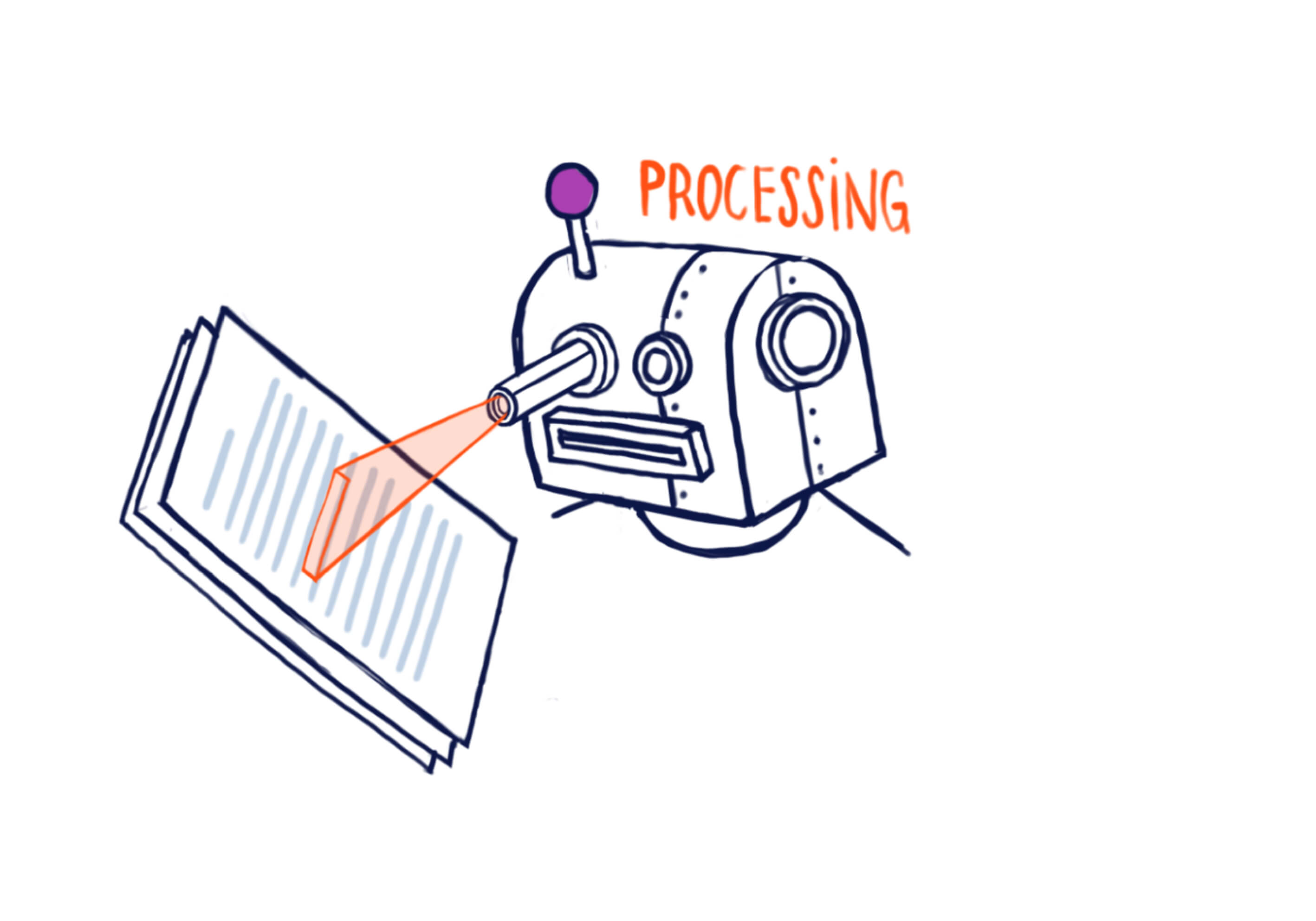 LIMITED SPOTS
All plans are 30% OFF for the first month! with the code WELCOME303
LIMITED SPOTS
All plans are 30% OFF for the first month! with the code WELCOME303

 LIMITED SPOTS
All plans are 30% OFF for the first month! with the code WELCOME303
LIMITED SPOTS
All plans are 30% OFF for the first month! with the code WELCOME303


Can an AI Detector Spot ChatGPT and Other AI Text?
In recent years, artificial intelligence (AI) has completely changed the way we create and consume content. From blog posts and school essays to product descriptions and business reports, tools like ChatGPT and other AI language models are producing large volumes of text in seconds.
While this has opened new doors for efficiency and creativity, it has also raised important questions about originality and authenticity.
To address these concerns, AI detectors have entered the scene. These tools claim they can identify whether a piece of text was written by a human or generated by AI.
But how effective are they really? Can an AI detector reliably spot ChatGPT text, or even content created by other advanced AI models? Let’s break it down.
An AI detector is a tool designed to analyze text and determine the likelihood that it was generated by artificial intelligence. Most detectors work by looking for patterns in sentence structure, word choice, and predictability.
For instance, human writing often contains natural variations, emotions, and unexpected phrasing. AI-generated writing, on the other hand, tends to follow more predictable and consistent patterns. AI detectors use algorithms and probability scores to flag these differences.
Some of the most popular AI detectors include GPTZero, Turnitin’s AI writing detection, Copyleaks, and Originality.ai. Each of these tools claims varying levels of accuracy, but none are perfect.
To understand detection, it helps to know what sets AI writing apart.
Predictable Language: AI models like ChatGPT generate text by predicting the next most likely word. This can sometimes lead to repetitive phrases or overly “smooth” sentences.
Limited Creativity: While AI can mimic creativity, it often struggles with producing genuinely new ideas, humor, or emotional depth.
Balanced Tone: AI tends to avoid extremes and writes in a very balanced, neutral tone. Humans, on the other hand, inject personal style, quirks, and even mistakes into their writing.
That said, the latest AI systems are improving rapidly, making them harder to distinguish from human writers.


Yes, though not always.
Many AI detectors flag texts created by ChatGPT because the texts exhibit very specific patterns. More often than not, the tools produce results with a marked “probability of AI-generated content.”
For instance, lengthy compositions that maintain a certain tone, controlled grammatical elements, and meticulously organized ideas will raise flags. Nonetheless, accuracy is not consistent.
Research shows AI detectors have an accuracy range of 70%-90% in identifying ChatGPT text. This means that the tools will produce a considerable number of false positives and false negatives.
An article that is entirely produced by a human is sometimes flagged as AI-generated, while a poorly modified ChatGTP text remains ignored.
While AI detectors are useful, they face several challenges:
More Human-Like AI: Each new version of AI, like GPT-4 or beyond, is designed to sound more natural and creative, making detection harder.
False Positives: Detectors may wrongly flag student essays, business reports, or other human work as AI-written. This can cause unnecessary stress and disputes.
False Negatives: Edited AI text, especially when passed through a paraphrase tool, may escape detection. By rewording sentences and adding variations, paraphrasing makes the text look more “human.”
Cross-Model Difficulty: While a detector may be trained to spot ChatGPT, it might not be as effective with other AI tools like Google Bard, Claude, or LLaMA.
Because of these challenges, many experts recommend using AI detectors only as a guide, not as absolute proof.
AI detectors are not limited to identifying ChatGPT output, they also attempt to catch content from other systems. However, performance can differ.
For example:
Bard (Google’s AI) tends to generate shorter, more straightforward responses. Some detectors handle this well, while others struggle.
Claude (Anthropic AI) is designed to be safer and more ethical, but its text may also resemble human writing more closely.
LLaMA and open-source models produce varying quality, making them harder to consistently detect.


AI detectors are especially important in areas where originality matters most.
Education: Schools and universities rely on detectors to ensure academic honesty. If a student submits an essay fully written by ChatGPT, detectors may catch it. However, false positives remain a concern, which is why teachers are advised to combine tools with personal judgment.
Content Marketing: Businesses want original blogs, ads, and product descriptions. Using AI detectors helps ensure that content isn’t copied or mass-produced by machines.In fact, businesses can also benefit from various resources to streamline project workflows, ensuring both efficiency and originality in their content creation processes.
Journalism: News outlets must maintain trust. AI detectors help editors confirm that stories are written authentically and not overly reliant on AI.
At the same time, detectors should be used responsibly, complementing human review rather than replacing it.
If you’re using an AI detector, keep these practices in mind:
Don’t Rely on One Tool Alone: Different detectors may give different results. Cross-checking helps improve accuracy.
Combine Human Judgment: Teachers, editors, or managers should review flagged content manually before making decisions.
Set Realistic Expectations: No AI detector is 100% accurate. Treat results as probabilities, not final proof.
Watch for Edited AI Text: If someone uses a paraphrase tool to modify ChatGPT text, it may slip past detection. Detectors are working on improving in this area, but challenges remain.
While AI detectors focus on identifying whether text is AI-generated, creators can also use other resources to enhance originality. For instance, there are several affordable design tools available today that help produce professional-looking visuals, infographics, and logos. Pairing strong writing with compelling design not only makes content more engaging but also builds credibility and trust with readers.


Looking ahead, the relationship between AI generators and AI detectors will resemble a technological “cat-and-mouse game.” As AI becomes better at sounding human, detectors will need to become more advanced.
AI vs. AI Arms Race: Generators will get smarter, and detectors will adapt to catch them.
Integration with Platforms: Tools like Google Docs, Microsoft Word, or learning management systems may include built-in detection features.
Ethical Concerns: As detectors get more powerful, they also raise privacy questions. Should every piece of text be analyzed for authenticity? Where should we draw the line?
The future is clear: AI detection isn’t going away, it’s becoming a crucial part of digital life.
So, can an AI detector spot ChatGPT and other AI texts? The answer is yes, but with limitations. While detectors are capable of identifying many AI-generated patterns, they are not flawless. False positives and negatives are still common, especially when texts are edited or passed through a paraphrase tool.
For now, the best approach is to treat AI detectors as helpful assistants, not ultimate judges. They work best when combined with human judgment, common sense, and a clear understanding of how AI operates.
As AI continues to shape the way we write, share, and consume information, one thing is certain: the balance between AI generation and AI detection will remain at the heart of the conversation about authenticity in the digital age.